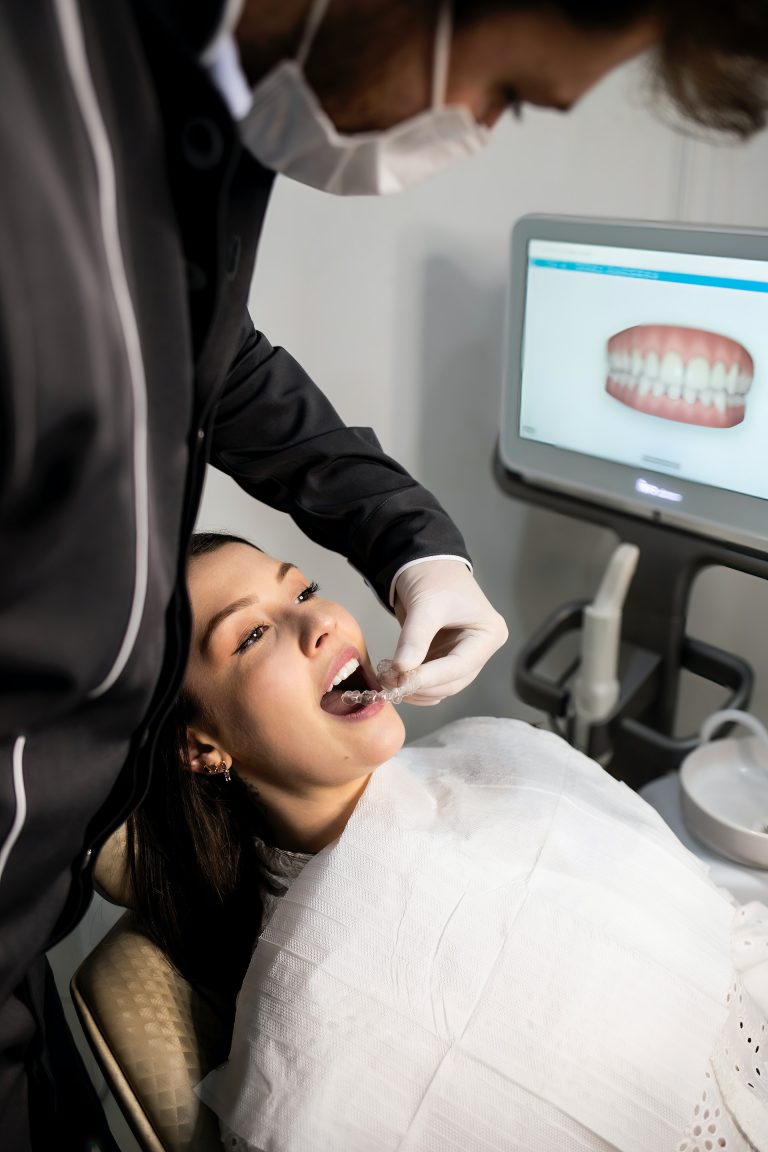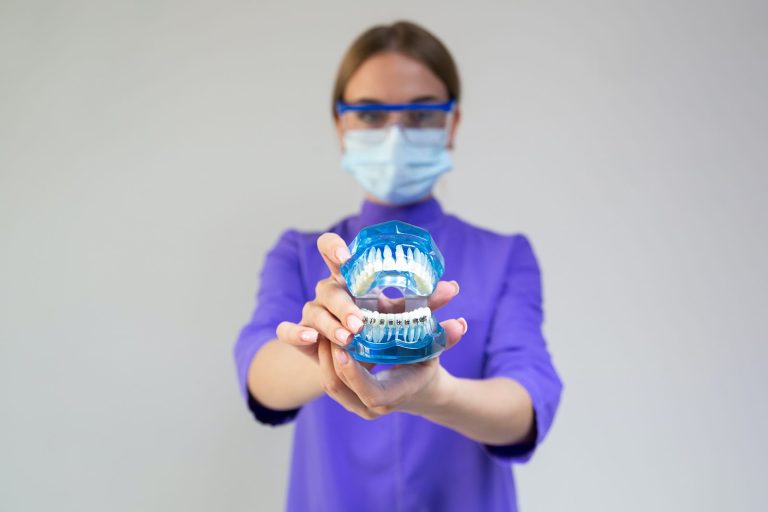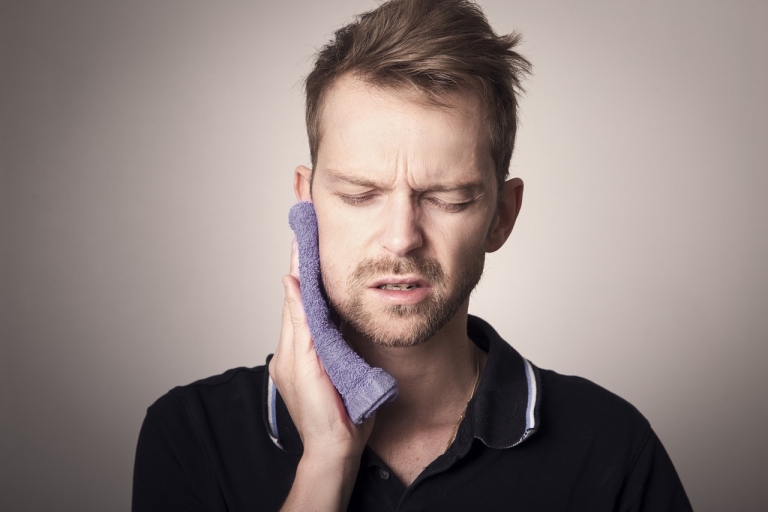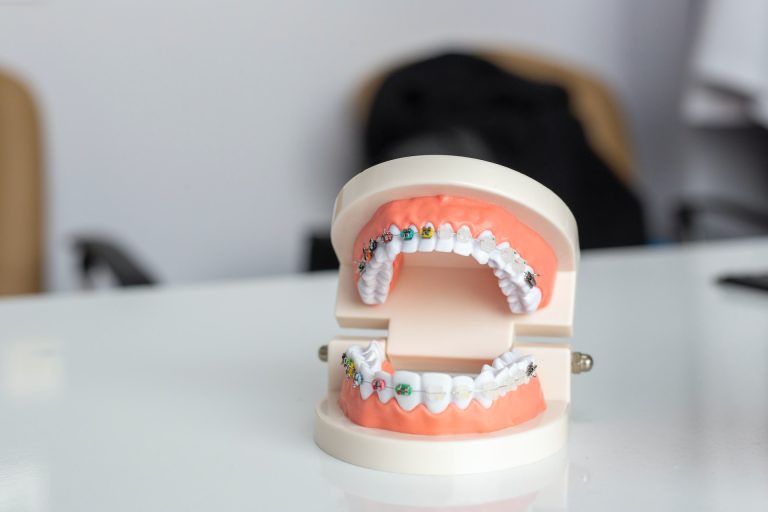Mention braces and images of metal wires, discomfort, and maintenance may come to mind. But how much attention do they really need? Let’s explore!
Good oral hygiene is key when wearing braces. Brush and floss daily with a soft-bristled toothbrush and an interdental brush or floss threader. A few extra minutes each day will keep your teeth healthy.
When eating, watch what you consume. Sticky and hard foods can damage the brackets or get stuck. Cut crunchy fruits and veggies into small pieces. Avoid sticky snacks like caramels or gum. This will reduce visits to the orthodontist.
Regular check-ups are essential for adjustments and advice from your orthodontist. Listen and follow their instructions to address any issues quickly.
Understanding Braces
To understand braces with what they are, why people get braces is the key solution to comprehending the maintenance involved. Discover the benefits of having braces, and explore the motivations individuals have for opting for orthodontic treatment.
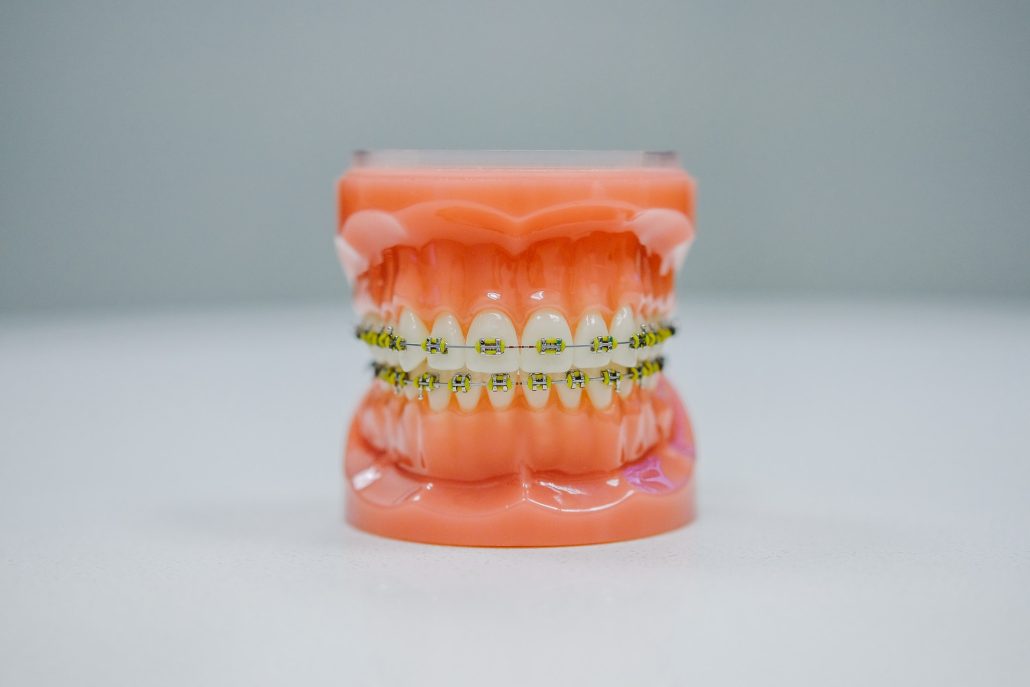
What braces are
Braces help to correct dental problems like crooked teeth, overcrowding, overbites, underbites, and gaps between teeth. They have brackets which are cemented to the front of each tooth, and an archwire that connects all the brackets. Elastics or rubber bands may also be used.
The duration of wearing braces varies. Adjustments are needed to loosen and tighten them as teeth shift. Whilst wearing them, it’s important to brush and floss regularly.
Surprisingly, braces date back thousands of years. Mummies from 400-500BC were found with metal bands around their teeth. The technology and materials used in making them has greatly improved since then, making them effective and comfortable.
Why people get braces
People get braces for varied reasons. Misaligned teeth, overcrowding in the mouth, or bite problems can all be addressed with braces. They can help you achieve a healthier smile and better oral health.
Orthodontists will give you a complete examination to figure out the best treatment plan. This may include X-rays, photographs, and impressions of your teeth and jaws. You will need regular adjustments to make sure you’re making progress.
You have options when it comes to braces. Metal braces are a popular choice, but there are also ceramic or clear braces if you prefer something more discreet. Lingual braces attach behind your teeth, so they won’t be seen from the front.
Straighter teeth do more than just look good. Easier cleaning and better chewing are two benefits. Plus, correcting misaligned bites can reduce jaw joint pain and headaches.
Having straighter teeth boosts self-esteem and encourages interactions with others. Invest in your dental health now and consult with an orthodontist!
Maintenance Routine
To maintain your braces with ease, adopt a solid maintenance routine. Emphasize daily oral hygiene practices, consider food and drink limitations, and commit to regular orthodontic appointments. These sub-sections provide essential solutions for ensuring effective braces care, ultimately helping you achieve the desired results of your orthodontic treatment.
Daily oral hygiene practices
Brush your teeth twice a day with a soft-bristled toothbrush and fluoride toothpaste. Clean all surfaces, including front, back, and chewing.
Floss daily with dental floss or interdental brushes. This removes trapped food and plaque.
Rinse with antimicrobial mouthwash to remove bacteria and freshen breath. Look for a mouthwash with fluoride for extra protection.
These are important for maintaining oral health.
History tells us that early toothbrushes were made from sticks and twigs with frayed ends. Ancient Greeks and Romans used crushed bones and oyster shells as toothpaste. We have come a long way in developing effective techniques and products for oral hygiene!
Brushing and flossing with braces
Brushing and flossing with braces needs special care to keep good oral health during orthodontic treatment. Here’s a guide to make sure your teeth and braces stay clean and healthy:
| 1. Brush after each meal. Use a soft-bristled toothbrush at a 45° angle to gently clean the brackets and wires. Give attention to all surfaces, near the gumline too. |
| 2. Floss daily. Use a floss threader or orthodontic flosser to get to hard-to-reach areas between teeth and underneath wires. This helps remove plaque and stops cavities. |
| 3. Rinse with mouthwash. Swish with an antimicrobial mouthwash to reach parts your toothbrush can’t. This fights bacteria, lessens plaque and freshens your breath. |
| 4. Look after food choices. Refrain from sticky or hard foods that can harm your braces, like chewing gum, caramel or popcorn. Choose softer options like yogurt, mashed potatoes or smoothies. |
| 5. Have regular check-ups. Visit your orthodontist as advised for adjustments and deep cleanings. They will make sure your braces are working well and give advice on any changes to your brushing routine. |
For best results, keep these key tips in mind:
- Be consistent with your oral hygiene routine.
- Spend extra time when brushing the brackets and wires for proper cleaning.
- Be aware of cavity prevention by limiting sugary drinks and snacks throughout the day.
To keep dental health good while wearing braces, it is important to stick to these guidelines. Note that this routine may need some changes according to individual cases.
Finally, did you know that research from the British Orthodontic Society suggests that good oral hygiene while wearing braces can lessen treatment time? It stresses the importance of following a thorough brushing and flossing routine during orthodontic treatment.
Using special tools like interdental brushes or water flossers
Including special tools like interdental brushes and water flossers in your dental care regimen is essential for a good hygiene routine. Here’s why:
- Interdental brushes: These tiny, pointed brushes can get into the tight spaces between teeth. They can remove plaque and food particles that regular brushing misses. Using interdental brushes regularly prevents bacteria buildup, reducing the risk of gum disease.
- Water flossers: These use a stream of pulsating water to clean between teeth and along the gumline. They are gentle and provide a thorough clean. Water flossing is especially useful for those with braces or dental implants, as it helps dislodge debris.
- Additional benefits: In addition to cleaning, they freshen breath by removing bacteria from hard-to-reach areas. They also promote gum health and contribute to overall oral hygiene.
To get the most out of these tools, here are some tips:
- Choose the right size: Interdental brushes come in various sizes for different gaps between teeth. Pick one that fits snugly without causing discomfort.
- Technique matters: When using interdental brushes, insert them into the gaps and move back and forth several times. For water flossers, angle the nozzle at 90-degrees towards the gumline and move it along each tooth.
- Frequency is key: Use interdental brushes or water floss at least once a day, ideally before bedtime, to remove residual plaque or food particles.
By integrating these tools into your daily routine and following these tips, you can enhance your dental hygiene and keep your smile healthy!
Food and drink considerations
Nutrition is essential for keeping the body healthy. Food and drinks make a big difference to your well-being. Here’s our guide to help you choose the right diet.
| Consideration | Recommendation |
| 1. Balanced Diet | Eat fruits, veggies, grains, lean proteins, and healthy fats. |
| 2. Hydration | Drink plenty of water every day. |
| 3. Portion Control | Don’t overeat and gain unnecessary weight. |
Also, some people may need special diets. If you have allergies or medical problems, talk to a doctor or dietitian for tailored advice.
Our Pro Tip: Moderation is key. Eat mindfully and pay attention to signals of hunger and fullness.
Foods to avoid or minimize
The Maintenance Routine includes a section on foods to avoid or minimize. We will discuss 3 key points:
- Limit processed and packaged foods. High preservatives, additives and unhealthy fats can have a bad effect on us.
- Say no to sugary drinks. They can lead to weight gain and health problems like diabetes and heart disease. Better to choose healthier options like water or herbal teas.
- Cut down on refined carbs like white bread, pasta and pastries. Blood sugar levels can be affected causing energy crashes.
Unique details need special attention. For instance, people with gluten intolerance must avoid wheat, barley and rye. And those with lactose intolerance must minimize dairy products.
A real story: I had a friend who knew the bad effects of his regular consumption of packaged snacks and sugary drinks. He started gaining weight and feeling low energy. After making dietary changes and cutting out these unhealthy foods, he saw a big improvement in his overall well-being.
This story reminds us that mindful food choices make a big difference. Whole foods over processed options are best for body maintenance.
Tips for eating with braces
Caring for your braces is key to a successful orthodontic treatment. Here are some tips to make munching easy:
- Go for soft foods like mashed potatoes, soups and yogurt.
- Avoid sticky or hard ones like caramel, nuts and hard candy.
- Cut your food into smaller pieces.
- Bite with less pressure.
Plus, don’t forget to brush and floss daily.
Braces can lead to a beautiful and healthy smile with the right approach. Emma was self-conscious about her crooked teeth. But with dedication, she got the smile she wanted. It’s proof of how proper care can change one’s life.
Regular orthodontic appointments
Staying on track with your orthodontic appointments is essential for keeping your dental health in check. These visits enable your orthodontist to monitor the progress of your teeth and adjust your braces or aligners if needed. Moreover, they will assess your overall oral health, looking out for any signs of gum disease or cavities.
Early detection of any potential issues is key for successful treatment. Regular visits also provide an opportunity to ask questions or voice any concerns about your treatment progress or oral hygiene practices. Missing out on these crucial appointments may result in prolonged treatment duration or compromised results. Don’t let fear of missing out stop you from achieving a beautiful and healthy smile!
Importance of regular check-ups
Regular check-ups are essential for any system’s upkeep. They help with early detection of any issues, avoiding further damage and pricey fixes. It’s important to prioritize these check-ups for optimal performance and system longevity.
Benefits of regular check-ups include the ability to spot minor issues before they worsen. This saves time and money, as extensive repairs can be avoided. Furthermore, check-ups allow for adjustments and refinements, so the system operates at its peak level with improved productivity and cost savings.
In addition, regular check-ups can extend a system’s lifespan. With proper maintenance, components work optimally for a longer period. This reduces the need for replacements and helps with long-term cost savings.
| Pro Tip: | Schedule check-ups regularly to prevent problems. Don’t wait for a malfunction; prevention is key! |
|---|
Overall, regular check-ups are crucial for any system’s health and performance. Being proactive in scheduling these inspections helps avoid breakdowns, improve efficiency, extend lifespan, and ultimately save both time and money in the long run. So make sure to prioritize regular check-ups for your maintenance routine!
Adjustments and tightening of braces
Regular check-ups, assessment, and evaluation are vital for proper maintenance of braces. Tightening them is key to shifting your teeth into desired positions. Your orthodontist may give you instructions post-tightening. To reduce the need for frequent adjustments, take good care of your braces. Brushing after meals plus avoiding hard or sticky foods and using interdental brushes or floss threaders will help.
Ancient civilizations also used adjustment and tightening to address dental issues. They employed primitive forms of braces made from animal bones or metals like gold and silver wires. Their attempts to straighten teeth indicate a desire for both functional and aesthetic improvements in dental health.
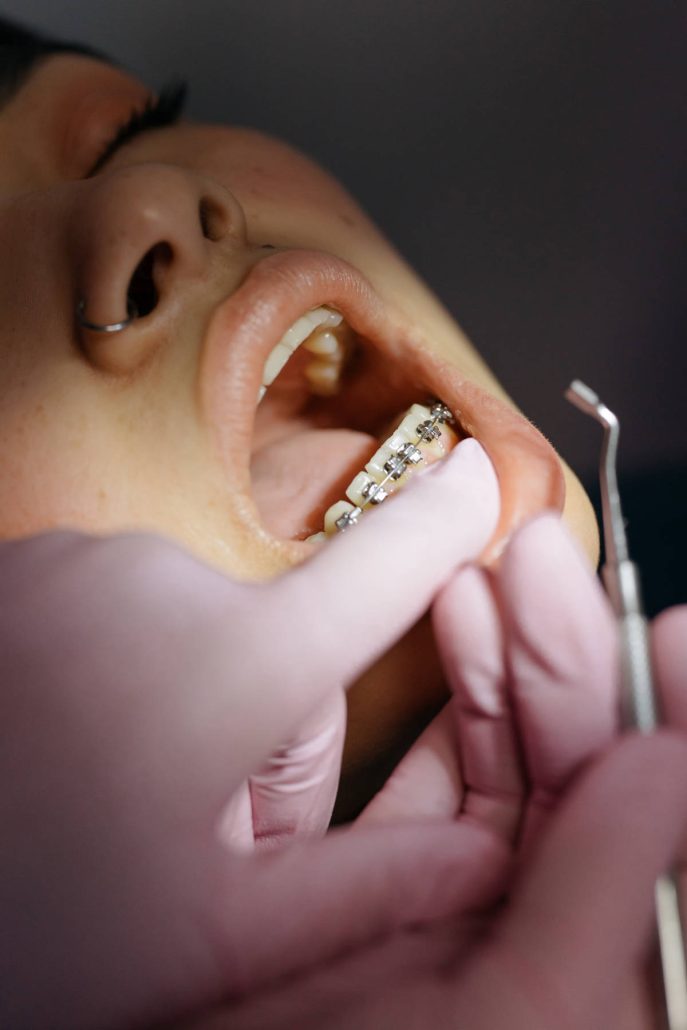
Troubleshooting and Common Issues
To troubleshoot and address common issues while wearing braces, here’s how to handle discomfort or pain, deal with broken or loose brackets or wires, and manage challenges related to oral hygiene.
Dealing with discomfort or pain
Identify the source
Analyze the situation to find out what’s causing the discomfort or pain.
Take measures
Adjust your posture, use ergonomic tools, or seek medical advice as needed.
Balanced approach
Don’t overreact or jump to conclusions. Consider all possibilities and make gradual changes.
Unique solutions
Everyone’s experience is different, so explore various solutions that fit your needs.
Stay proactive
Take steps to reduce discomfort and promote physical health.
Breaks & stretching
Regular breaks and stretching exercises can significantly help.
Handling broken or loose brackets or wires
Broken or Loose Brackets and Wires? Here’s a Pro Guide to Help!
Assess the situation first. Is it minor? Perhaps you can handle it yourself. If so, try using wax to hold the bracket in place. If a wire has snapped, use the eraser end of a pencil or a clean cotton swab. These are temporary fixes.
See your orthodontist right away. Don’t ignore any issues! This will help maintain the progress of your treatment and avoid further problems. For discomfort, rinse your mouth with warm saltwater. That should do the trick.
Managing oral hygiene challenges
Achieving optimal dental health can be quite a challenge – but don’t worry! Here are a few tips to help you manage:
- Choose the right toothbrush. Soft bristles will reduce gum irritation and damage to enamel.
- Brush correctly. Use gentle, circular motions and make sure all surfaces of the teeth are clean.
- Floss daily. Flossing removes plaque and food particles, preventing cavities and gum disease.
- Eat a healthy diet. Fruits, veggies, and calcium-rich foods give essential nutrients for strong teeth and gums.
It’s important to remember to go to regular dental check-ups. This way, any issues can be identified and treated early.
Pro Tip: Use an antibacterial mouthwash too. It kills bacteria which can lead to bad breath or gum disease. Follow instructions on the bottle for best results.
Conclusion
Braces need maintenance, but it’s not hard. With good oral hygiene and check-ups, the process is simpler. Brush and floss daily, using a soft toothbrush and fluoride toothpaste. Interdental brushes and threaders help clean between teeth. Don’t forget to see the orthodontist for adjustments and to spot any issues.
It’s normal to feel sore when you first get braces or after an adjustment. But it usually goes away in a few days. There are products to help with any irritation.
Braces have come a long way since ancient times. Archaeologists have found mummified remains with metal bands wrapped around their teeth. It’s a reminder that braces require effort, but the result is a straight smile. With proper care and check-ups, you can get the smile you want without much hassle.
Frequently Asked Questions
1. How often do I need to clean my braces?
It is recommended to clean your braces and teeth after every meal or snack. This will prevent food particles from getting trapped and causing plaque or tooth decay.
2. How do I clean my braces?
You can use a soft-bristled toothbrush and toothpaste to clean your braces. Gently brush around the brackets and wires, making sure to reach all surfaces. It is also important to floss daily to remove any food stuck between your teeth and braces.
3. Can I still eat my favorite foods with braces?
While certain foods should be avoided to prevent damage to your braces, you can still enjoy most of your favorite foods. It is best to avoid hard, sticky, or chewy foods that can get stuck in your braces or break the wires. Your orthodontist will provide you with a list of specific foods to avoid.
4. How often should I visit my orthodontist for adjustments?
Typically, you will need to visit your orthodontist every 4 to 6 weeks for adjustments. These adjustments ensure that your braces are properly aligning your teeth and allow the orthodontist to make any necessary changes to the treatment plan.
5. Are there any special oral hygiene products I should use with braces?
Using an interdental brush or a water flosser can be helpful in cleaning around the braces and between your teeth. Your orthodontist may also recommend a mouthwash or fluoride rinse to strengthen your teeth and prevent tooth decay.
6. How long do I need to wear braces?
The duration of orthodontic treatment varies for each individual, depending on the severity of the dental issue. On average, braces are worn between 1 and 3 years. Your orthodontist will give you a more accurate estimate after evaluating your specific case.

